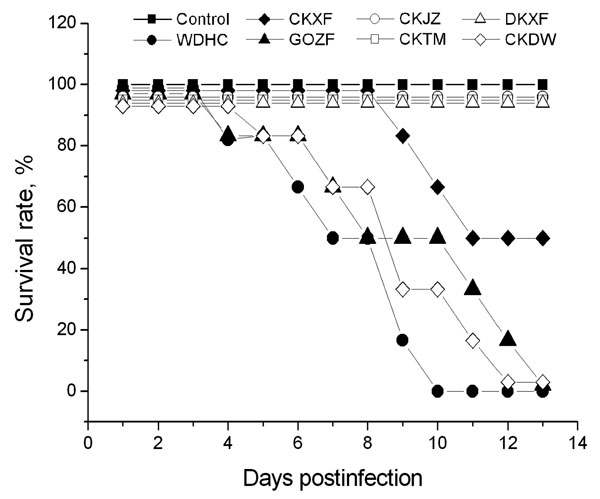Volume 13, Number 5—May 2007
Dispatch
Avian Influenza (H5N1) Virus in Waterfowl and Chickens, Central China
Figure 1

Figure 1. Survival times of mice infected with the 7 avian influenza virus (H5N1) isolates. Mice were intranasally inoculated with 106 50% egg infectious dose of viruses in a volume of 50 μL. A/widgeon/Hubei/EWHC/2004 (EWHC), A/chicken/Hubei/327/2004 (CKDW), and A/goose/Hubei/ZFE/2004 (GOZF) induced a 100% death rate within 4–13 days, A/chicken/Hubei/XFJ/2004 (CKXF) induced a 50% death rate, and A/duck/Hubei/XFY/2004 (DKXF), A/chicken/Hubei/TMJ/2004 (CKTM), and A/chicken/Hubei/JZJ/2004 (CKJZ) caused no clinical signs or death.
Page created: June 23, 2010
Page updated: June 23, 2010
Page reviewed: June 23, 2010
The conclusions, findings, and opinions expressed by authors contributing to this journal do not necessarily reflect the official position of the U.S. Department of Health and Human Services, the Public Health Service, the Centers for Disease Control and Prevention, or the authors' affiliated institutions. Use of trade names is for identification only and does not imply endorsement by any of the groups named above.